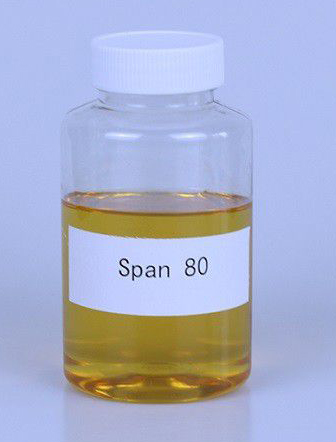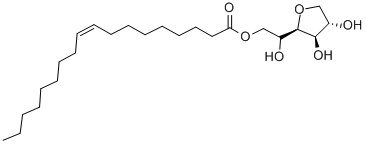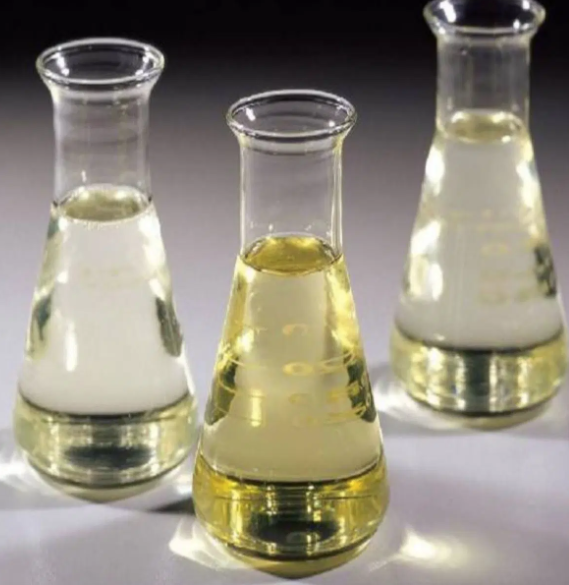The different applications of Span 80
Background
Span 80 is commonly used non-ionic surface active emulsifiers, which is widely used in emulsification, petroleum, medicine, cosmetics, textiles, paints, leather and other industries, especially their application in the preparation of microemulsion fuels, which has attracted scholars and researchers. s concern. The research on microemulsion fuel has gradually attracted the attention of many countries and regions as early as the last century. The process of industrialization and marketization of microemulsion fuel has continued to advance. Some countries and regions have put it into the commercial market and have been continuously improving and updating it. Replacement. In the future, microemulsion fuel is bound to have broader development prospects due to its energy saving and environmental protection advantages.
Structure and property
Span 80, the chemical composition is sorbitan oleate (C24H44O6), is an amber viscous oil (Picture 1). The hydrophilic-lipophilic value (HLB) is 4.3, soluble in warm water, and has good dispersibility in organic solvents such as ethanol and ethyl acetate. It is oily and self-emulsifying, and is one of the common raw materials for the preparation of water-in-oil emulsions.

Picture 1 Span 80
Synthesis
88 kg of sorbitol was put into the reactor, decompressed and dehydrated, and after the dehydration was completed, 130 kg of refined oleic acid and an appropriate amount of sodium hydroxide (as a catalyst) were pressed into it. Start stirring, vacuumize, slowly heat up, and react at 200-210 °C for 6 h. Sampling and measuring the acid value, when the acid value is 6-7, the esterification reaction is completed. Cool down and let stand for 24 hours. After standing, it is divided into upper and lower layers. The lower layer is a black jelly, which is separated and discarded. Put the upper clarification hydraulic pressure into the decolorization kettle, heat it to about 65℃, decolorize it with activated carbon, and decolorize it at 80~85℃ for 1 h. After filtration, the filtrate was dehydrated under vacuum for 5 h to obtain the finished product.
Application
Wang Xueli et al. used Span 80 as a surfactant to prepare diesel microemulsion for bio-oil solubilization [1]. In this experiment, n-octanol was the best co-surfactant (auxiliary), and the optimal ratio of Span80 to n-octanol was 0.4. The experimental results show that the fuel properties of the bio-oil/diesel microemulsion are more ideal and similar to diesel, especially in terms of fuel calorific value, compared with the original synthetic bio-oil. Therefore, using bio-oil as a diesel additive is an effective way to improve the feasibility of its application.
Lin et al. used Span 80 and Tween 80 to construct a stable multiphase microemulsion by phacoemulsification [2]. The results show that when the hydrophilic-lipophilic value (HLB) of the mixed emulsifier is 8, the separation rate of the emulsion is the lowest regardless of the amount of emulsifier added. That is, the compound system of Span 80 and Tween 80 has the potential to construct stable microemulsion fuel.
Liang et al. used a mixture of Span 80 and Tween 80 as a surfactant to construct a water-in-oil diesel microemulsion, combined with oxygen-enriched combustion technology, to investigate the combustion performance and emission performance of the target emulsion in a diesel engine [3]. The results show that the combustion of the constructed microemulsion under oxygen-enriched conditions can effectively reduce the emission of particulate matter (PM) and nitrogen oxides, but the output power will be reduced.
Compared with the combustion results of biodiesel alone, it can be seen that the emulsion fuel has a significant reduction effect on the emission of nitrogen monoxide and smoke. Srinivasa Rao and Anand investigated the combustion performance of biodiesel emulsion fuels constructed with Span 80 and Tween 80 in an engine system [4]. The experimental results show that the water-containing biodiesel emulsion fuel constructed with Span80 and Tween80 has a higher braking fuel consumption rate than diesel, but its braking thermal efficiency is lower than that of diesel; its exhaust emission indicators are better than pure diesel combustion; The comparison of the combustion results of diesel alone shows that the emulsion fuel has a significant reduction effect on the emission of nitrogen monoxide and smoke.
Renference
1 Wang X L, Yuan X Z, Huang J, et al. Study on the solubilization capacity of bio-oil in diesel by microemulsion technology with Span 80 as surfactant. Fuel Process. Technology, 2014,118:141–147
2 Lin C Y, Chen L W. Emulsification characteristics of three- and two-phase emulsions prepared by the ultrasonic emulsification method. Fuel Process. Technology,2006,87:309–317
3 Liang Y C, Shu G Q, Wei H Q, et al. Effect of oxygen enriched combustion and water–diesel emulsion on the performance and emissions of turbocharged diesel engine. Energy Conversation, 2013,73:69–77
4 Srinivasa Rao M, Anand R B. Performance and emission characteristics improvement studies on a biodiesel fuelled DICI engine using water and AlO (OH) nanoparticles. Application Thermo Engergy,2016,98:636–645
Related articles And Qustion
Lastest Price from Span 80 manufacturers

US $0.00-0.00/kg2025-09-20
- CAS:
- 1338-43-8
- Min. Order:
- 1kg
- Purity:
- 99%
- Supply Ability:
- 1000kg

US $0.00-0.00/kg2025-06-11
- CAS:
- 1338-43-8
- Min. Order:
- 0.001kg
- Purity:
- 99.99%
- Supply Ability:
- 200000t



